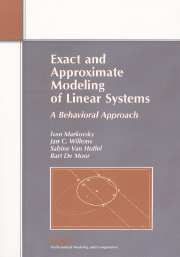Thinking Probabilistically
Probability theory has diverse applications in a plethora of fields, including physics, engineering, computer science, chemistry, biology and economics. This book will familiarize students with various applications of probability theory, stochastic modeling and random processes, using examples from all these disciplines and more. The reader learns via case studies and begins to recognize the sort of problems that are best tackled probabilistically. The emphasis is on conceptual understanding, the development of intuition and gaining insight, keeping technicalities to a minimum. Nevertheless, a glimpse into the depth of the topics is provided, preparing students for more specialized texts while assuming only an undergraduate-level background in mathematics. The wide range of areas covered - never before discussed together in a unified fashion –� includes Markov processes and random walks, Langevin and Fokker–�Planck equations, noise, generalized central limit theorem and extreme values statistics, random matrix theory and percolation theory.
- Explains the power of probability theory both as a conceptual framework and as a tool across mathematics and physics
- Avoids using unnecessary technicalities, keeping the mathematical prerequisites to a minimum
- Contains numerous and diverse examples of interdisciplinary applications of probability theory
Reviews & endorsements
'A remarkable demonstration that advanced topics need not be esoteric. Amir takes us through random walks on networks, extreme value statistics, Kramers theory, anomalous diffusion and other topics generally omitted from introductory texts, always rooting every discussion in applications of terrific current interest. I found the discussion of Lévy-stable distributions especially insightful as a principled approach to the nonstandard walks that abound in contexts from biophysics to finance.' Philip C. Nelson, University of Pennsylvania
'The book is a suitable springboard for self-study because it introduces a wide variety of topics and contains many references to current work. In the classroom, the book can function either as the basis for a course in special topics or as a source of material to spice up more traditional statistical-mechanics courses … the methods for studying random phenomena introduced in Thinking Probabilistically will help readers understand reasoning techniques that may not be terribly familiar to physicists. Moreover, following the author's arguments is a rewarding intellectual exercise in its own right.' Rob de Ruyter, Physics Today
Product details
No date availablePaperback
9781108789981
242 pages
243 × 170 × 15 mm
0.44kg
Table of Contents
- 1. Introduction
- 2. Random walks
- 3. Langevin and Focker–Planck� equations and their applications
- 4. Escape over a barrier
- 5. Noise
- 6. Generalized central limit theorem and extreme value statistics
- 7. Anomalous diff usion
- 8. Random matrix theory
- 9. Percolation theory
- Appendix A. Review of basic probability concepts and common distributions
- Appendix B. A brief linear algebra reminder, and some Gaussian integrals
- Appendix C. Contour integration and Fourier transform refresher
- Appendix D. Review of Newtonian mechanics, basic statistical mechanics and Hessians
- Appendix E. Minimizing functionals, the divergence theorem and saddle point approximations
- Appendix F. Notation, notation...
- References
- Index.








